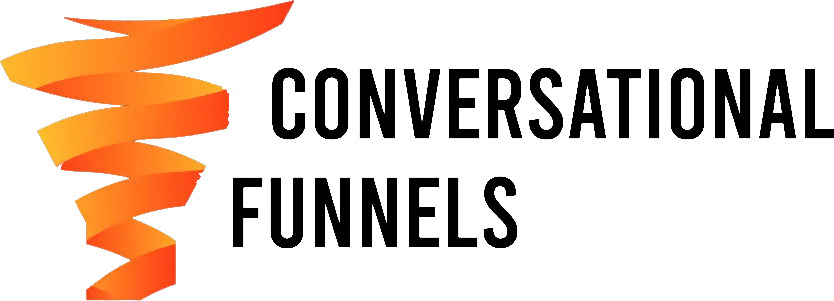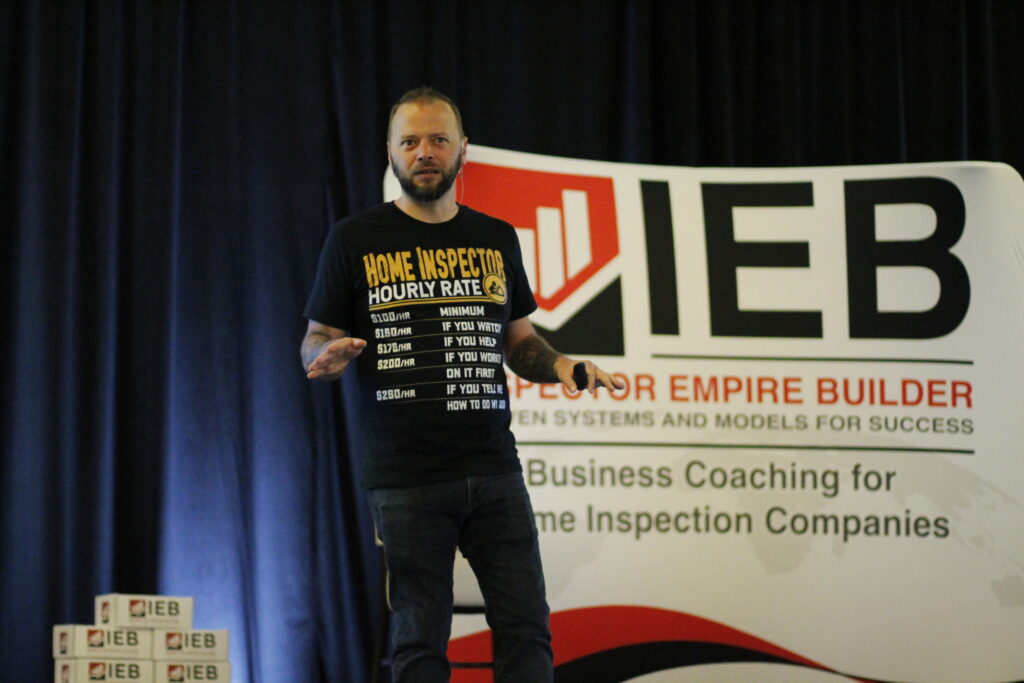Building authentic relationships has become essential with all the marketing noise, where consumers are overwhelmed by ads and notifications. Business growth consultant Josh Thomas has created an approach called Conversational Funnels, which transforms traditional sales funnels by emphasizing genuine conversations over automated, impersonal sales tactics. With over 15 years of experience helping more than 5,000 entrepreneurs grow their revenue, Josh knows that sales success hinges on trust and authenticity.
What Are Conversational Funnels?
 Conversational Funnels are designed for today’s distracted, skeptical consumer, offering an interactive, trust-building alternative to outdated sales methods. This system is a next-generation approach to sales. They focus on creating trust through real-time, human-like conversations instead of pushing leads through rigid steps. Traditional sales funnels often rely on automated emails, countdown timers, and scarcity tactics that consumers have come to distrust. According to Josh Thomas, Conversational Funnels represent a needed shift toward authenticity.
Conversational Funnels are designed for today’s distracted, skeptical consumer, offering an interactive, trust-building alternative to outdated sales methods. This system is a next-generation approach to sales. They focus on creating trust through real-time, human-like conversations instead of pushing leads through rigid steps. Traditional sales funnels often rely on automated emails, countdown timers, and scarcity tactics that consumers have come to distrust. According to Josh Thomas, Conversational Funnels represent a needed shift toward authenticity.
Unlike static sales funnels, Conversational Funnels introduce a personalized interaction that feels engaging and trustworthy, helping potential clients feel heard and valued. The goal here is to put relationships before sales, which leads to higher-quality leads and long-term customer loyalty.
Why Traditional Funnels Are Losing Effectiveness
Traditional sales funnels once thrived on urgency and scarcity to drive conversions, but today’s consumers see through these tactics. The average person encounters up to 20,000 ads daily, along with constant notifications, all competing for their attention. With an attention span that now averages just 8.25 seconds, consumers don’t have the patience for lengthy pitches or gimmicky tactics.
The key to sales success is to create certainty and authenticity. As people become increasingly wary of traditional marketing methods, Conversational Funnels eliminate the fake urgency and generic messaging that often drive customers away, replacing them with personalized, meaningful conversations.
Key Components of Conversational Funnels
 These high-converting funnels are built on authenticity, transparency, and real-time interaction.
These high-converting funnels are built on authenticity, transparency, and real-time interaction.
Authenticity and Immediate Response
In a world of instant gratification, speed is essential. According to Josh, businesses that respond to inquiries within one minute see a 391% increase in their chances of closing a deal. However, speed alone isn’t enough—responses must also be authentic. Conversational Funnels use AI to facilitate immediate replies while maintaining transparency. If customers are interacting with AI, they’re informed of it upfront.
A quick, authentic response shows potential clients that a business values their time and needs. While AI can handle initial inquiries, the Conversational Funnels model emphasizes human-like interactions that address customer questions meaningfully.
Transparency About AI Usage
Transparency is a core principle of Conversational Funnels. Many consumers prefer the speed of automated responses, but only if they know they’re interacting with AI. Josh Thomas recommends always disclosing when AI is used, which can build credibility and trust.
By being upfront about using AI, businesses can deliver the immediate responses customers expect without sacrificing authenticity. This approach satisfies the need for speed while preserving a sense of honesty, two factors that are crucial in today’s marketplace.
Conversational Flow and Interaction
Traditional sales funnels are often rigid, moving leads through a preset sequence. Conversational Funnels, on the other hand, adapt to the customer’s needs, making each conversation unique. Instead of a one-size-fits-all message, Josh’s method ensures interactions feel personal and relevant.
This conversational style helps businesses tackle client questions, creating a supportive customer experience rather than pushy. It’s about giving potential clients space to explore, ask questions, and feel comfortable, all essential for building trust and moving prospects closer to a purchase decision.
Lead Generation Through Podcasts: The Flip Show Method
Josh Thomas also uses a unique podcasting approach called the “Flip Show” as part of his Conversational Funnels strategy. Rather than relying on traditional advertising, he invites potential clients onto his podcast, fostering genuine conversations that build the “know-like-trust” factor.
During these podcast episodes, Josh and his guests discuss industry insights and relevant topics, creating value-driven content that feels authentic and helpful. After the interview, many guests naturally become interested in Josh’s services because they’ve built a rapport with him in a conversational setting. This method has allowed Josh’s team to book over 300 qualified sales calls this year alone without spending on ads or cold outreach.
How to Use the Flip Show Method in Your Business
Josh encourages businesses to try this method as a powerful lead-generation tool. Here’s how to implement this approach:
- Choose Relevant Topics: Identify areas of overlap between your ideal client’s needs and your expertise. Use these shared interests as the basis for podcast episodes.
- Invite Guests from Your Target Market: Focus on inviting potential clients as guests, allowing them to share their insights on the show. This builds rapport and opens the door for future collaboration.
- Let Conversations Flow Naturally: Avoid making a hard pitch during the interview. Instead, focus on building a connection. The trust that develops will naturally lead to post-interview discussions about your services.
Businesses can use podcasts as a lead generator to create a platform for genuine conversations that bring in high-quality leads. To learn more about how to set up a Flip Show podcast, Josh offers a free guide on Conversational Funnels at ConversationalFunnels.com/NewsWire.
The Spider Method: A Practical Sales Qualification Framework for Entrepreneurs
 The Spider Method is a structured process Josh Thomas uses to qualify potential clients in sales conversations. The Spider Method involves assessing eight specific criteria, divided into four internal and four external sales qualifiers, to determine if a prospect is ready and likely to make a purchasing decision.
The Spider Method is a structured process Josh Thomas uses to qualify potential clients in sales conversations. The Spider Method involves assessing eight specific criteria, divided into four internal and four external sales qualifiers, to determine if a prospect is ready and likely to make a purchasing decision.
Internal Qualifiers
- Pain: Identifies the specific problem or pain point the prospect is facing. Understanding their pain helps ensure they recognize a need for a solution.
- Doubt: Assess any reservations they may have about finding a solution or previous experiences that didn’t work, which could impact their confidence in moving forward.
- Cost: Establishes the budget or resources they’re willing to commit, ensuring their financial expectations align with the offer.
- Desire: Measures the prospect’s level of interest and motivation to solve the problem, determining how urgent or essential it is to them.
External Qualifiers
- Trust: Builds the foundation that the prospect believes in your ability to deliver the promised solution effectively.
- Support: Determines if the prospect has any partners, stakeholders, or family members who need to be involved in the decision.
- Money: Confirms their financial readiness and ensures they can afford the solution.
- Timing: Assess the timeline for action, identifying if they’re ready to start soon or if their timeline doesn’t match your availability or urgency.
By methodically addressing each of these areas, the Spider Method helps reveal the prospect’s readiness and commitment to proceed, minimizing objections later in the conversation and maximizing the likelihood of a successful close.
Building an Effective Conversational Funnel: Tools and Techniques
For Conversational Funnels to be effective, Josh Thomas recommends using a mix of tools to maintain personal connections at scale. Here are some of his top strategies:
AI-Powered Chatbots and CRM Integration

AI-powered chatbots play a crucial role in Conversational Funnels by handling initial inquiries with a human-like touch. Advanced chatbots can respond to a high volume of questions while keeping the interaction natural and responsive. Integrating these chatbots with a CRM ensures that each conversation remains consistent, even when different team members get involved.
CRM systems help businesses keep track of client interactions, enabling them to provide consistent responses over time. With CRM integration, team members can follow up seamlessly, creating a smooth experience for potential clients from their first interaction onward.
Authentic Response Templates
To maintain consistency while ensuring each message feels genuine, Josh suggests using response templates that align with the brand’s tone and values. These templates should be regularly updated based on customer feedback to keep them relevant.
Templates serve as a starting point, allowing businesses to respond quickly without losing authenticity. They keep messaging on-brand while making it easy to personalize each interaction, reinforcing the trust-building aspect of Conversational Funnels.
Drive Quick Revenue with Discovery Contracts
Josh Thomas recommends offering a “discovery contract” for businesses seeking a fast revenue boost instead of pushing a big sale upfront. This involves a paid consultation—such as a two-hour session—where clients receive personalized advice without a significant initial commitment.
Discovery contracts immediately provide value, demonstrating expertise and building credibility without pressuring the client. This approach brings in revenue and filters out non-serious prospects, allowing you to focus on clients genuinely interested in your services.
Benefits of Discovery Contracts in Conversational Funnels
- Immediate Value: By providing valuable insights early on, you establish credibility from the outset.
- Filtering Serious Leads: Charging a nominal fee for the discovery session ensures that only committed leads participate, saving time and resources.
- Pathway to Larger Engagements: Starting with a small, paid consultation can lead to more significant engagements as clients see the value firsthand.
One mentor in Josh’s network turned a $108,000 discovery contract into a seven-figure deal. Starting with a low-commitment engagement can be a powerful way to build long-term relationships.
Overcoming Objections with Empathy and Specificity
 Every sales process encounters objections. According to Josh Thomas, the main objection he encounters is uncertainty—prospects want to know if the solution will work specifically for them. To address this, Conversational Funnels use empathy and specific examples to reassure clients.
Every sales process encounters objections. According to Josh Thomas, the main objection he encounters is uncertainty—prospects want to know if the solution will work specifically for them. To address this, Conversational Funnels use empathy and specific examples to reassure clients.
Instead of general assurances, Josh suggests showing prospects exactly how a product or service will address their needs.
How To Build Your Conversational Funnel
Ready to start building trust with Conversational Funnels? Use this quick guide to implement Josh Thomas’s approach if you don’t have the budget to have it done professionally:
- Identify Your Ideal Audience: Understand your target market’s needs and pain points and tailor each stage of the funnel to address these specifically.
- Develop a Response Framework: Create responses that feel personal, authentic, and transparent and address the client’s unique needs and concerns.
- Add Conversational Content: Integrate podcasts, interactive webinars, and other content that lets you connect with potential clients naturally and meaningfully.
- Optimize with Feedback: Continuously refine your approach based on customer feedback and engagement data to keep your funnel practical and relevant.
Success Stories with Conversational Funnels
Several of Josh’s clients have reported impressive results from switching from traditional funnels to conversational funnels. Clients often double their lead quality after adopting a more conversational, trust-based approach.
If you’re interested in getting started with Conversational Funnels, Josh Thomas offers a free framework to help you build your trust-based funnel. Download it at ConversationalFunnels.com/NewsWire to access the tools and strategies that have helped businesses drive sustainable growth.
Conversational Funnels: The Future of Sales Funnels
As traditional sales tactics lose effectiveness, This proven framework offers a fresh approach that meets the needs of today’s consumers. By focusing on transparency, authenticity, and personalized interactions, this method enables businesses to stand out and build meaningful relationships.
In Josh’s words, “Selling isn’t about who yells the loudest; it’s about who listens best.” Conversational Funnels offer a way to establish real connections, future-proofing your business for a landscape where trust is the most valuable currency.
Download Josh Thomas’s free Conversational Funnels framework at ConversationalFunnels.com/NewsWire.


